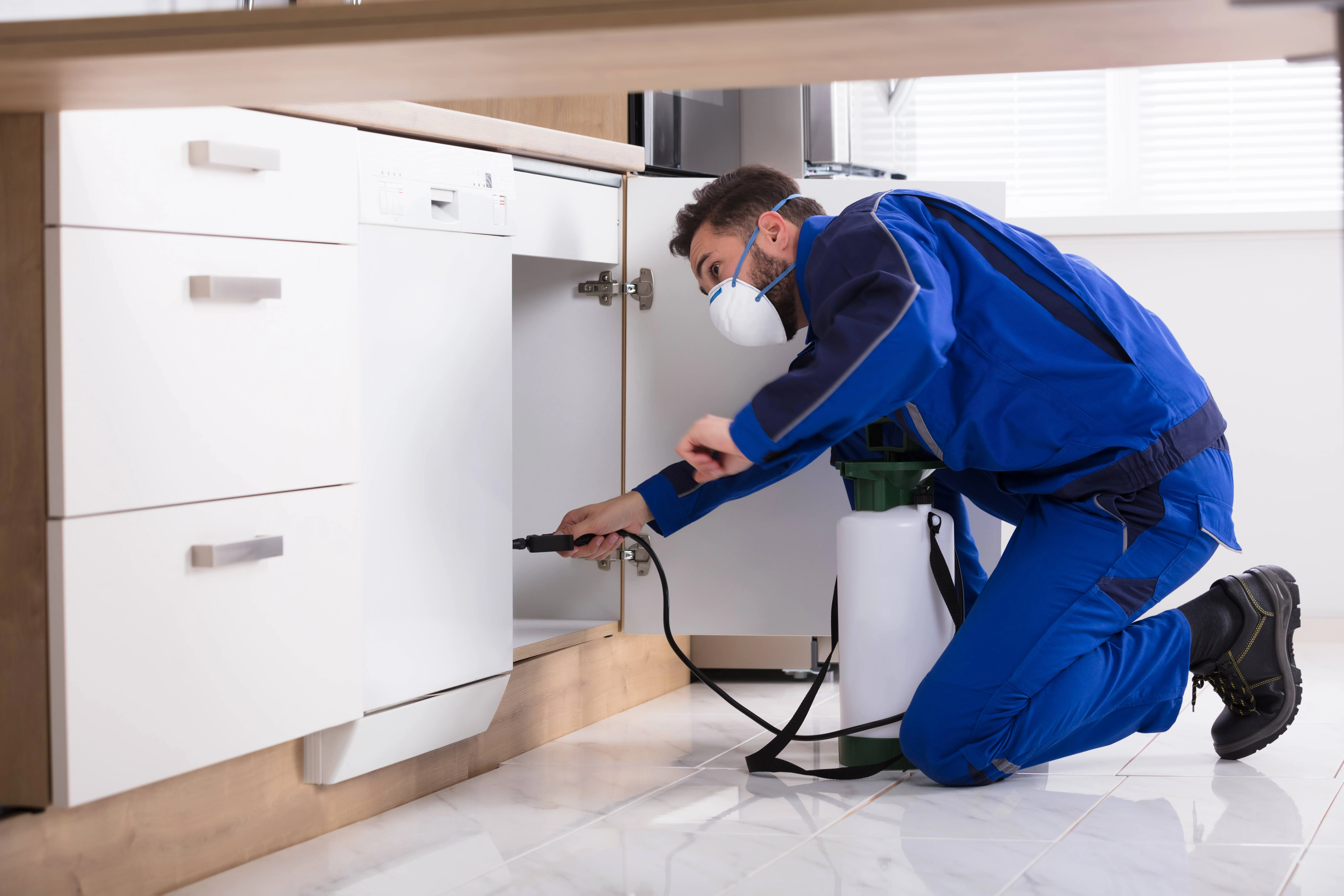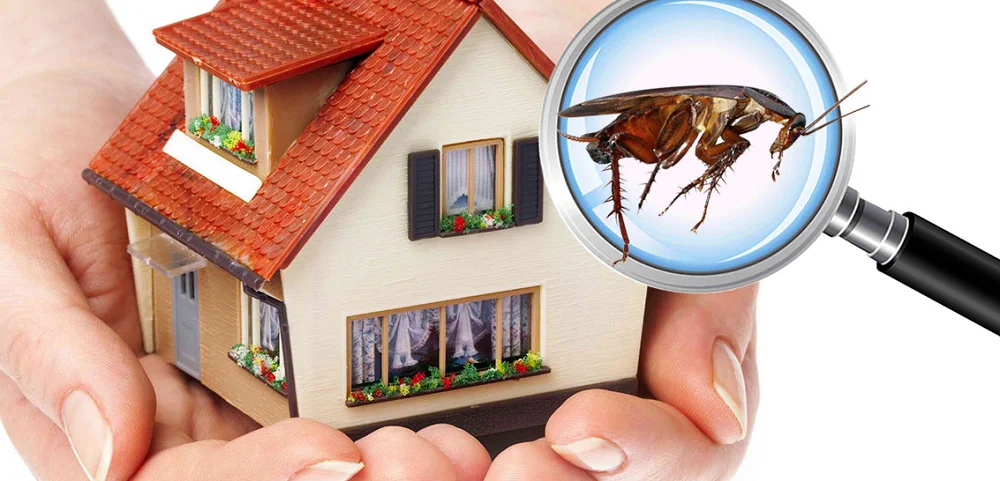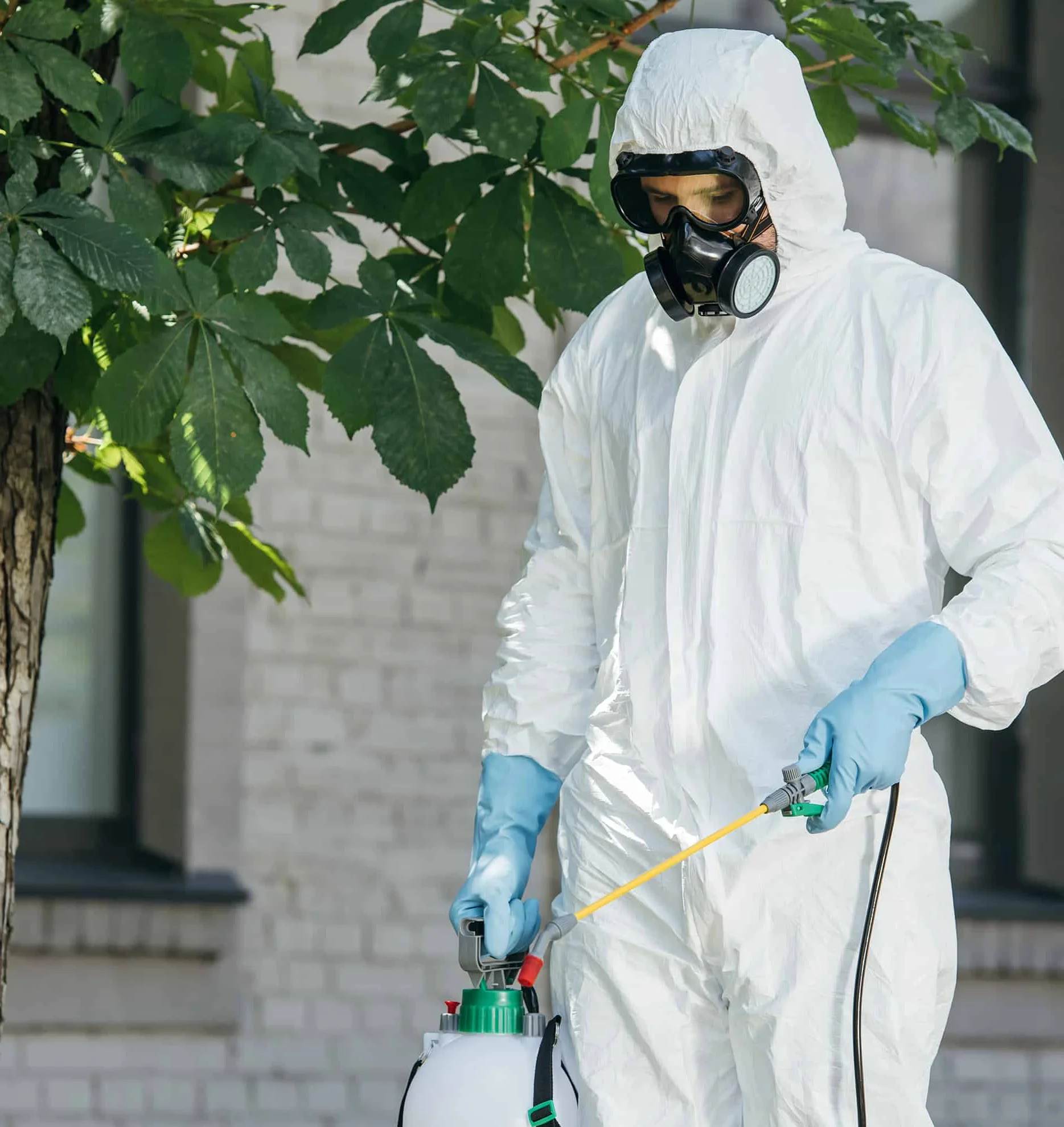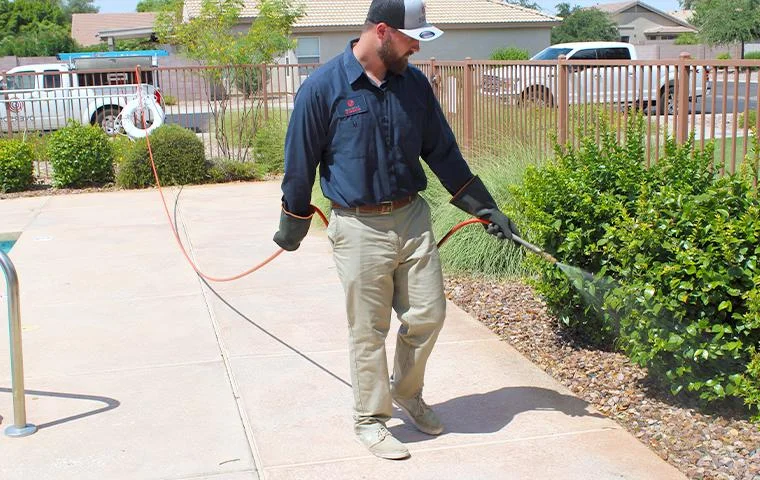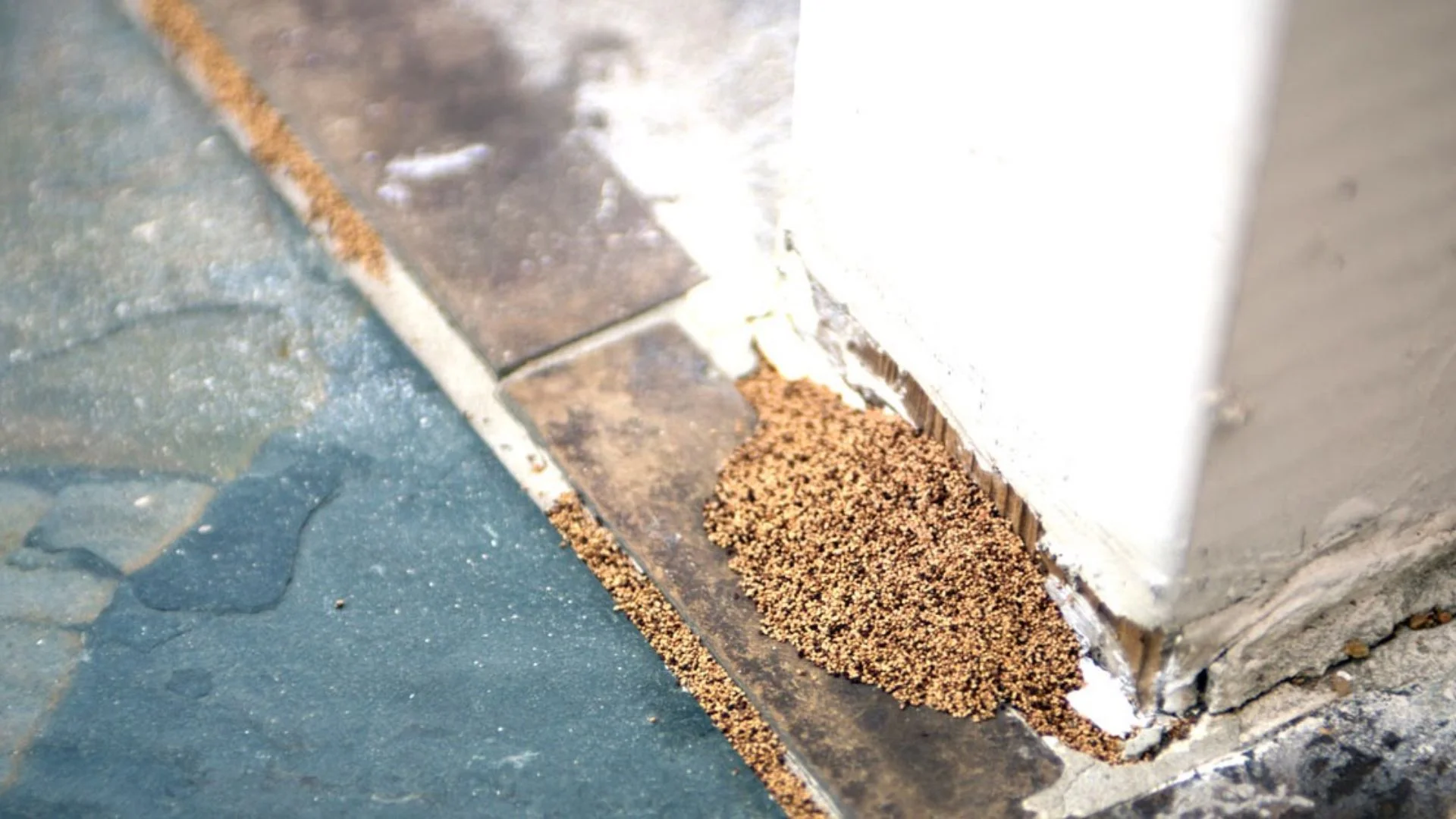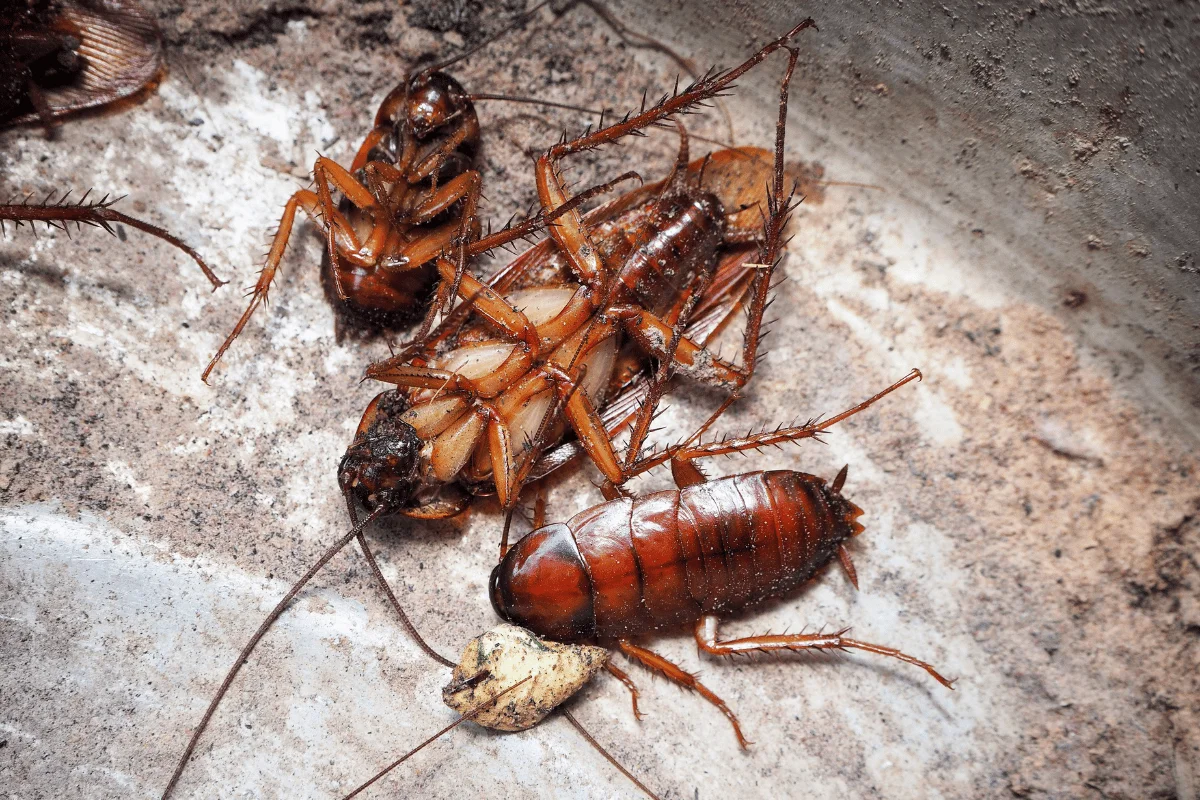From cold, snowy winters to warm, humid summers, Ohio's varying climate creates ideal conditions for a wide range of persistent pests. Whether you're dealing with carpenter ants silently damaging your home's structure, bed bugs disrupting your sleep, or mice seeking shelter during harsh winter months, pests remain a year-round concern across the Buckeye State. Effective pest control in Ohio requires understanding these unique regional conditions – the combination of urban centers, suburban neighborhoods, and rural farmlands that all contribute to distinctive pest challenges.
Properties throughout Ohio face potential damage and health risks from these unwanted invaders, prompting many residents and business owners to seek professional exterminator services. Local pest control experts recognize that proactive prevention and swift intervention are essential to maintaining pest-free environments across Ohio's diverse landscapes. This comprehensive guide explores the common pest challenges in Ohio, effective control strategies including eco-friendly pest solutions, and the advantages of working with local experts who understand the region's specific pest patterns.
Dealing with an urgent pest situation? Our Ohio specialists provide
emergency pest control
24/7 and complimentary
pest inspections to protect your property.
Get help now for immediate assistance!
Pest Control Challenges Unique to Ohio
Ohio's geographical features and climate create distinct pest control challenges that require specialized approaches. Here's why pest control in Ohio demands local expertise:
-
Four distinct seasons Ohio experiences dramatic seasonal changes, with each season bringing different pest pressures. Winter drives rodents indoors seeking warmth, spring awakens overwintering insects, summer brings mosquito breeding, and fall triggers a rush of pests seeking shelter before winter returns.
-
Diverse landscapes From Lake Erie's shoreline to Appalachian foothills, Ohio's varied terrain supports different pest populations. Urban areas like Cleveland and Columbus face cockroach and bed bug issues, while rural regions contend with agricultural pests and wildlife intrusions.
-
Abundant moisture Ohio's numerous rivers, lakes, and regular precipitation create ideal breeding conditions for mosquitoes and provide the moisture termites need to thrive. Basement flooding and humidity issues in older homes further compound moisture-related pest problems.
-
Housing variety Ohio features everything from historic homes in Cincinnati to modern developments in suburban Columbus. Older structures often have more entry points and hiding places for pests, while new construction can disturb existing pest habitats, triggering invasions.
-
Increasing pest resistance Some Ohio pest populations have developed resistance to common treatments, particularly bed bugs in urban centers and certain ant species. This resistance requires more sophisticated, targeted approaches to pest management.
Considering these factors, effective pest prevention in Ohio requires customized strategies that account for your specific location, property type, and the seasonal pest pressures typical to your area. Year-round vigilance and professional partnerships offer the best protection against Ohio's persistent pest challenges.
Common Pests in Ohio
Ohio's climate and geography create favorable conditions for numerous pest species. Here are the most prevalent pests Ohio residents encounter and how they impact homes and businesses:
Bed Bugs
Technician checking for bed bug evidence during a professional inspection
Bed bugs have made a dramatic resurgence across Ohio, particularly in densely populated areas like Cleveland, Cincinnati, and Columbus. These persistent parasites are expert hitchhikers, spreading through luggage, furniture, and clothing. Ohio's high number of universities, hotels, and apartment complexes creates perfect conditions for bed bug transmission, making it one of the top states for infestations nationwide.
These nocturnal pests hide in mattress seams, headboards, and furniture cracks during daylight hours, emerging at night to feed on sleeping humans. Their bites cause itchy welts and significant psychological distress. Professional treatment is almost always necessary, as bed bugs are resistant to many over-the-counter products and can survive for months without feeding.
Stink Bugs
Checking window frames for stink bug entry points
The brown marmorated stink bug, an invasive species from Asia, has become increasingly problematic throughout Ohio. These shield-shaped insects enter homes in large numbers during fall, seeking winter shelter in attics, wall voids, and around windows. When disturbed or crushed, they release their characteristic foul odor, making DIY removal challenging.
While stink bugs don't bite, reproduce indoors, or cause structural damage, their sheer numbers and unpleasant smell make them significant nuisance pests. Professional pest prevention focuses on sealing entry points and applying strategic treatments to prevent seasonal invasions, particularly in rural and suburban communities bordering agricultural areas where stink bugs feed during summer months.
Mice and Rats
Setting up rodent control measures in an Ohio basement
When Ohio's temperatures drop, rodent infestations spike dramatically. House mice and Norway rats are the most common species, seeking food and warmth in Ohio homes and businesses. These persistent pests can squeeze through incredibly small openings – mice need only a gap the size of a dime to gain entry.
Beyond the unsettling experience of seeing rodents scurrying across floors, these pests pose serious risks. They contaminate food with droppings, urine, and hair; chew through electrical wiring creating fire hazards; and carry diseases transmissible to humans. Effective rodent control requires a comprehensive approach that includes exclusion work (sealing entry points), strategic trap placement, and ongoing monitoring to ensure complete elimination.
Mosquitoes
Ohio's numerous waterways, rain patterns, and humid summers create ideal breeding conditions for mosquitoes. These blood-feeding insects are more than just an outdoor nuisance – they can transmit serious diseases including West Nile virus, which appears in Ohio every year. Asian tiger mosquitoes, recognizable by their distinctive black and white striped pattern, have expanded their range throughout the state, bringing additional health concerns.
Effective mosquito control in Ohio requires a combination of habitat modification (eliminating standing water), larvicide applications in water features that cannot be drained, and targeted treatments around landscapes where adult mosquitoes rest. Many Ohio residents incorporate regular mosquito treatments into their summer property maintenance to reclaim outdoor living spaces from these persistent pests.
Carpenter Ants
Unlike the small black ants that invade kitchens, carpenter ants are large (up to ½ inch) wood-destroying insects that can cause significant structural damage to Ohio homes. They don't eat wood like termites but excavate it to create nesting galleries, preferring moisture-damaged timber around windowsills, door frames, decks, and roof eaves.
Carpenter ant problems often indicate underlying moisture issues in a structure. These insects establish satellite colonies inside buildings while maintaining their main colony outdoors in tree stumps or woodpiles. Professional treatment targets both indoor and outdoor colonies using specialized baits and treatments, while also addressing moisture problems that attracted the ants initially.
Eco-Friendly Pest Control Approaches
Many Ohio residents prioritize environmental responsibility while still effectively managing pest problems. Modern eco-friendly pest solutions offer the best of both worlds – effective control without unnecessary chemical exposure. Integrated Pest Management (IPM) principles form the foundation of sustainable pest control across Ohio, combining habitat modification, exclusion techniques, biological controls, and targeted low-toxicity treatments only when necessary.
These green approaches are particularly important in Ohio's diverse ecosystems – from Lake Erie's shoreline to the Ohio River valley. Professional exterminators can implement strategies like installing door sweeps and screening vents to physically block pests, applying botanical-based repellents around perimeters, using mechanical traps instead of rodenticides when possible, and employing beneficial nematodes for lawn pest management.
Environmental Commitment
Our Ohio pest specialists are fully trained in cutting-edge eco-friendly techniques, helping preserve the state's natural beauty while effectively resolving your pest concerns.
Below is a comparison of different pest control methods, highlighting the benefits of environmentally conscious options:
| Treatment Method |
Benefits |
Best Applications |
| Traditional Chemical Treatments |
Rapid action against active infestations; consistent results in severe cases
|
Serious infestations requiring immediate control; situations where other methods have failed
|
| Targeted Bait Systems |
Minimal chemical exposure in living areas; eliminates entire colonies at the source
|
Cockroach, ant, and termite control; effective for pests that share food and transfer bait
|
| Mechanical Exclusion |
Zero chemical usage; provides long-term prevention; addresses root causes
|
Rodent control; preventing seasonal pest invasions; homes with children, pets, or sensitive individuals
|
| Biological Controls |
Natural predator-prey relationships; self-sustaining once established; preserves beneficial insects
|
Landscape and garden pest management; mosquito control near water features; agricultural settings
|
| Botanical Treatments |
Plant-derived compounds; lower toxicity; pleasant aromas; faster biodegradation
|
Perimeter treatments; mosquito management; households seeking reduced chemical exposure
|
A qualified Ohio pest control professional can recommend the most appropriate eco-friendly solution based on your specific pest issues, property characteristics, and personal preferences. With the right combination of preventative practices and targeted treatments, you can maintain a pest-free environment while minimizing environmental impact.
Residential vs Commercial Pest Control
Residential Pest Protection
Ohio homeowners face distinct pest challenges across the state's varied regions. Residential pest protection focuses on safeguarding your family's comfort, health, and property value with customized treatment plans. Most Ohio homes benefit from quarterly preventative services that address seasonal pest pressures – preventing spring and summer insects, fall invaders, and winter rodent intrusions before they become established.
Successful home pest management typically incorporates exterior perimeter treatments, targeted interior applications as needed, ongoing monitoring, and homeowner education about simple prevention practices. Technicians work closely with families to address specific concerns, such as keeping treatments safe around children, pets, and gardens, while still providing effective protection.
Commercial Pest Control
Ohio businesses across diverse industries require specialized pest management approaches that balance effective control with regulatory compliance, operational continuity, and reputation protection. From Cleveland's food processing facilities to Columbus office complexes and Cincinnati healthcare centers, each commercial environment presents unique challenges requiring tailored solutions.
Professional commercial pest control services in Ohio offer comprehensive programs that include detailed documentation for health inspections, employee training, structural recommendations, and discreet service scheduling that doesn't interrupt business operations. Industrial facilities might require extensive rodent management systems, while restaurants need focused attention on fly prevention and cockroach control.
Commercial programs typically involve more frequent service visits than residential plans, with many Ohio businesses requiring monthly or bi-weekly inspections to maintain consistently pest-free environments. By partnering with experienced commercial pest specialists, Ohio businesses protect both their customers and their brand reputation.
Whether you need residential pest protection for your Ohio home or customized commercial pest control for your business –
schedule your service today and ensure your property stays pest-free!
Why Choose Local Ohio Pest Experts?
When protecting your Ohio property from pests, working with local professionals who understand the region's unique challenges provides substantial advantages. A locally-based pest control company offers specialized knowledge and personalized service that national chains often can't match. Here's why choosing Ohio-based experts makes a significant difference:
-
Regional pest knowledge Local technicians understand Ohio's specific pest pressures – from Lake County's carpenter ant issues to Cincinnati's termite zones. This regional expertise means more accurate identification and effective treatment recommendations based on local pest behavior patterns.
-
Rapid response capabilities When facing sudden pest emergencies like a wasp nest discovery or rodent intrusion, having a nearby service provider means quicker emergency pest control response times. Local teams can often provide same-day service when urgent situations arise.
-
Understanding of local construction styles From Cleveland's historic homes to modern Columbus developments, Ohio-based professionals understand common structural vulnerabilities in regional architecture. This knowledge helps them identify likely entry points and problem areas that out-of-state companies might miss.
-
Weather-adapted treatment protocols Local experts adjust their treatment strategies according to Ohio's seasonal patterns – applying winter rodent prevention before the first freeze, timing termite treatments for optimal effectiveness, and adapting mosquito control to local breeding cycles.
Beyond technical expertise, local professional exterminators have deep community connections and investment in their reputation. They're not just service providers – they're neighbors who understand the importance of maintaining Ohio's comfortable living environments and thriving businesses through effective pest management.
Don't let pests compromise your Ohio home or business. Trust our local expertise for effective pest control in Ohio –
reach out today and restore peace of mind!
Top Cities for Pest Control in Ohio
While pests are present throughout Ohio, certain cities experience distinctive pest pressures based on their unique urban environments, surrounding landscapes, and climate variations. Here are some key Ohio cities where professional pest management is particularly important:
Columbus
As Ohio's capital and largest city, Columbus faces significant urban pest pressures. The city's blend of historic districts and new developments creates diverse pest habitats. Bed bugs are particularly problematic in campus areas near Ohio State University, while the city's extensive parks system and Scioto River contribute to mosquito activity during warm months.
Cleveland
Cleveland's location along Lake Erie influences its pest patterns, with lakefront properties experiencing higher rates of flying insect activity. The city's older housing stock, particularly in neighborhoods like Tremont and Ohio City, creates ideal conditions for structural pests like carpenter ants. Urban rodent populations require ongoing management throughout downtown and industrial areas.
Seasonal Pest Guide for Ohio
Spring (March-May)
- Termite swarms emerge
- Carpenter ants become active
- Stinging insects build new nests
Recommendation: Schedule annual termite inspection and address overwintering pests that emerge.
Summer (June-August)
- Mosquito populations peak
- Bed bug activity increases
- Ant invasions in kitchens
Recommendation: Implement mosquito control and maintain regular perimeter treatments.
Fall (September-November)
- Stink bugs invade homes
- Mice and rats seek indoor shelter
- Spiders become more visible indoors
Recommendation: Seal entry points and implement rodent prevention before winter.
Winter (December-February)
- Rodent infestations peak
- Overwintering insects in attics
- Occasional cockroach activity
Recommendation: Focus on rodent control and inspect attics for wildlife intrusions.
What Our Ohio Clients Say
"After struggling with mice in our Cleveland home every winter, we finally found a permanent solution with PestControl100. Their comprehensive approach sealed every entry point and eliminated the existing problem. Now we can enjoy winter without unwelcome guests!"
- Michael R., Cleveland
★★★★★
"When we discovered bed bugs in our Columbus apartment, we were devastated. The team responded quickly, treated thoroughly, and provided clear instructions throughout the process. Three months later, still no signs of these pests returning!"
- Jennifer T., Columbus
★★★★★
"As a restaurant owner in Cincinnati, pest control is absolutely critical. Their commercial service is discreet, thorough, and keeps us in compliance with health regulations. The detailed documentation they provide for inspections is particularly valuable."
- David M., Cincinnati
★★★★★
Frequently Asked Questions
How does Ohio's climate affect pest control strategies?
Ohio's four distinct seasons require adaptive pest control approaches throughout the year. Our cold winters drive rodents and overwintering insects indoors, while hot, humid summers create ideal breeding conditions for mosquitoes and other insects. Effective year-round pest management in Ohio involves adjusting treatment protocols seasonally – focusing on exclusion work and rodent control in fall/winter, then transitioning to insect prevention and management in spring/summer. We typically recommend quarterly service visits to address these changing seasonal pressures, ensuring continuous protection regardless of weather shifts.
Are your treatments safe for pets and children?
Absolutely. We prioritize your family's safety while effectively eliminating pests. Our technicians are trained to apply products in targeted areas where pests travel but family members don't – typically along baseboards, behind appliances, and around exterior foundations. We use microencapsulated formulations that bond to surfaces and dry quickly, minimizing potential exposure. For homes with children, pets, or sensitive individuals, we offer specialized low-impact and eco-friendly options. After treatment, we'll provide specific safety instructions, but typically treated areas are safe for family activity once dry (usually within 1-2 hours).
How do you handle bed bug infestations in Ohio homes?
Bed bug management in Ohio requires a multi-faceted approach due to their resilience and the challenges of our housing types. Our process begins with a thorough inspection using specialized equipment to identify all harborage areas. Treatment typically combines several methods: targeted application of residual insecticides to cracks and crevices, dust formulations for wall voids and electrical outlets, and high-heat steam treatment for mattresses and upholstery.
Unlike some providers who offer one-time treatments, we implement a comprehensive three-visit protocol over 3-4 weeks to address insects at various life stages. We also provide detailed preparation guidelines before treatment and prevention recommendations afterward to ensure long-term success. This systematic approach has proven highly effective against Ohio's increasingly treatment-resistant bed bug populations.
Understanding Ohio's Most Destructive Pests
Termites
Technician checking for termite damage during a comprehensive inspection
While not as prevalent as in southern states, Eastern subterranean termites still cause significant damage to Ohio homes, particularly in the southern and central regions of the state. These silent destroyers work 24/7 eating through wooden structural components, often going undetected until significant damage has occurred. In Ohio, termite swarms typically emerge in spring, especially after rain when soil temperatures reach about 70°F.
The average cost of termite damage repair in Ohio ranges from $3,000 to $8,000, making prevention and early detection critical. Professional termite inspection services use specialized tools to detect these insects in hard-to-reach areas like crawl spaces and behind walls. Established termite colonies require professional treatment methods such as soil treatments, bait systems, or wood treatments depending on the specific circumstances.
Cockroaches
Professional cockroach treatment in a residential kitchen
Ohio's urban areas face significant challenges with cockroach infestations, particularly in multi-unit housing, restaurants, and older buildings with complex plumbing systems. The German cockroach is the most common species, reproducing rapidly and developing resistance to many over-the-counter insecticides. Meanwhile, larger American cockroaches (sometimes called "waterbugs") often enter homes through sewer connections, especially in older neighborhoods.
Cockroaches present serious health concerns – they trigger asthma and allergies, spread bacteria that cause food poisoning, and create unsanitary conditions. Professional cockroach management employs a strategic combination of gel baits, growth regulators, dusts for wall voids, and targeted liquid applications. Thorough kitchen inspections and treatment of hidden harborage areas are essential for complete elimination.
"Ohio's climate creates perfect conditions for several persistent pest species. Understanding their seasonal patterns is the key to effective, year-round protection for your property."
Preventative Pest Control Measures for Ohio Properties
The most effective pest management strategy combines professional services with smart homeowner practices. Here are essential preventative measures Ohio property owners can implement to minimize pest problems:
Exterior Maintenance
-
Seal entry points Inspect your home's exterior for cracks, gaps around utility pipes, and openings around doors and windows. Even tiny openings can allow pests inside.
-
Maintain a dry perimeter Ensure proper drainage around foundations, fix leaking outdoor faucets, and keep gutters clean to prevent moisture buildup that attracts pests.
-
Create a buffer zone Keep mulch, firewood, and dense vegetation away from your foundation. Maintain a 12-18 inch gravel or bare soil barrier around the perimeter.
-
Trim trees and shrubs Prevent branches from touching your home, as they create highways for ants, rodents, and other pests to access your roof and upper levels.
Indoor Practices
-
Practice proper food storage Store pantry goods in sealed containers, clean up crumbs promptly, and don't leave pet food out overnight to avoid attracting ants and rodents.
-
Manage moisture issues Repair leaking pipes, use bathroom exhaust fans, and consider dehumidifiers in damp basements to create conditions less favorable to pests.
-
Declutter regularly Reduce hiding places for pests by minimizing clutter, especially in storage areas like basements, attics, and garages.
-
Inspect items before bringing them inside Check used furniture, packages, and grocery bags for hitchhiking pests, particularly to prevent bed bug introductions.
Professional Maintenance Tip
Even with excellent preventative measures, Ohio's diverse pest pressures make professional quarterly treatments a wise investment. Seasonal services target different pests as they emerge throughout the year, providing continuous protection.
Specialized Pest Services for Ohio Residents
Mosquito & Tick Management
Ohio's wooded areas and abundant water sources create ideal habitats for mosquitoes and ticks, both of which can transmit serious diseases. Our comprehensive management programs include:
-
Habitat modification consultations Identifying and eliminating breeding sites on your property
-
Barrier treatments Applied to vegetation where adult mosquitoes and ticks rest
-
Larvicide applications For water features that cannot be eliminated
-
Tick dragging inspections To identify tick populations in yard areas
Monthly treatments during peak season (May through September) provide the most effective protection for outdoor living spaces, allowing families to enjoy Ohio's beautiful summer weather without constant pest harassment.
Wildlife Management & Exclusion
From raccoons in attics to skunks under decks, Ohio homes – especially those near wooded areas – often experience wildlife conflicts. Our wildlife services address these issues humanely and effectively with:
-
Humane trapping and relocation When animals have already taken residence in or under structures
-
Exclusion work Identifying and sealing potential entry points to prevent future intrusions
-
Damage repair Fixing insulation, vent covers, and other areas damaged by wildlife
-
Preventative treatments Applying deterrents to discourage returns
Our wildlife specialists understand Ohio regulations regarding protected species and employ best practices that resolve conflicts while respecting natural wildlife behaviors.
Experience the difference that local expertise makes! Our comprehensive pest control in Ohio addresses your specific needs –
contact us today for a customized solution!
More Ohio Cities We Serve
Cincinnati
Cincinnati's combination of historic architecture and hilly terrain creates unique pest challenges. The city's older neighborhoods feature homes with countless entry points for pests, while the Ohio River valley creates elevated humidity levels ideal for termites and moisture-loving insects. Brown recluse spiders are more common in Cincinnati than in northern Ohio cities.
Toledo
Toledo's proximity to Lake Erie influences its pest patterns significantly. The lake effect creates temperature and humidity conditions that support large mosquito populations during summer months. The city's extensive waterways and canals provide ideal breeding grounds for mosquitoes, while the port facilities occasionally introduce non-native pest species through shipping activities.
Dayton
Dayton's mix of older neighborhoods and newer suburbs creates varied pest pressures across the city. The area's clay-heavy soils can create drainage issues around foundations, increasing termite pressure in some neighborhoods. The city's extensive park system and proximity to the Great Miami River contribute to seasonal insect activity, particularly mosquitoes during warmer months.

